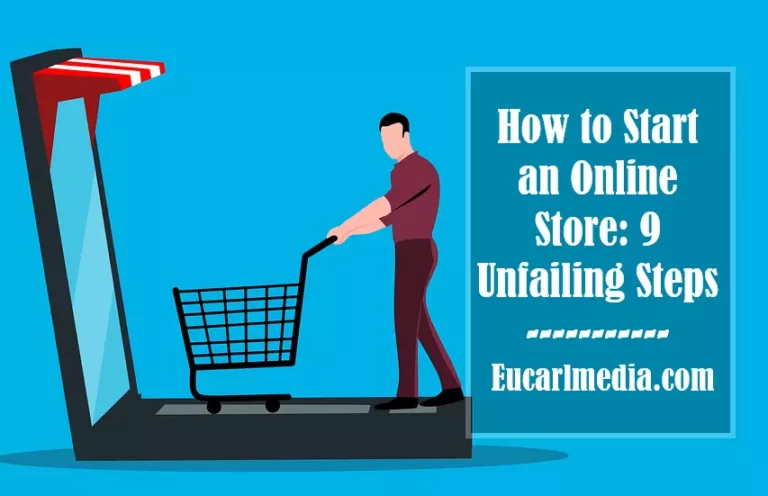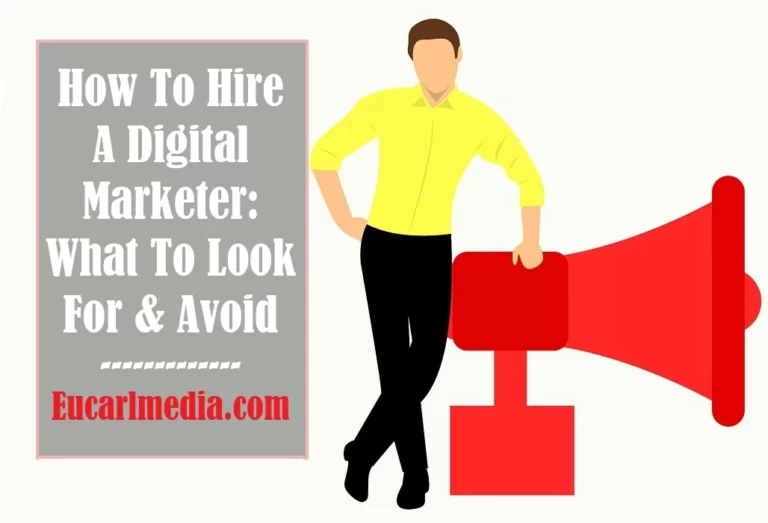AIDA Model In Digital Marketing: A Comprehensive Guide
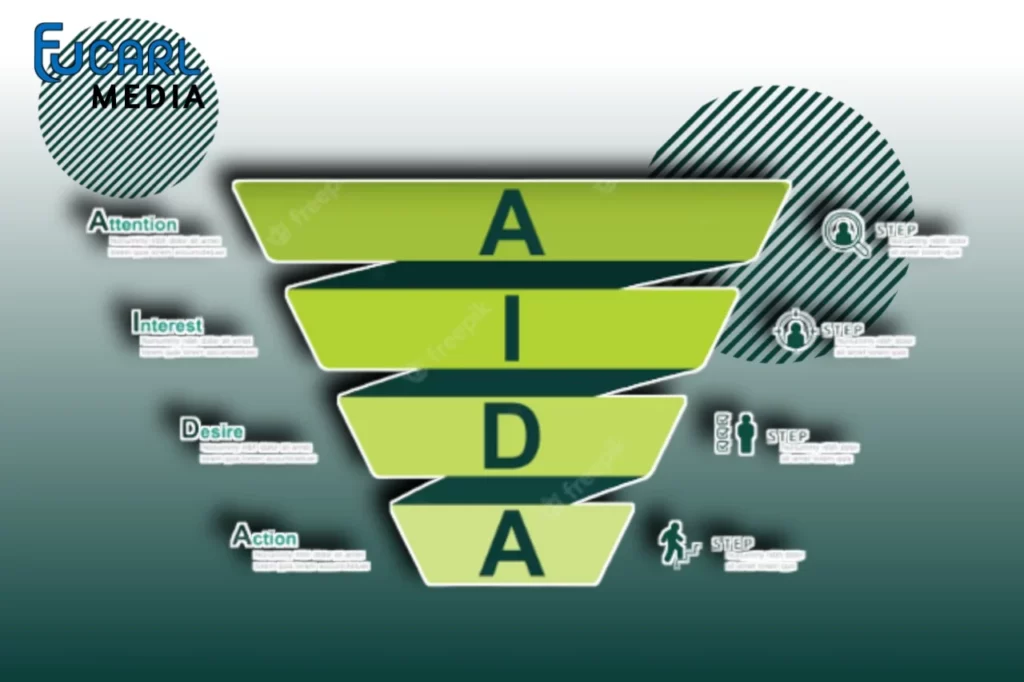
According to studies, most marketing strategies change significantly over time. The AIDA model, however, is one that has not changed at all, whether applied in an online or offline context.
Many experts, including those working in marketing, have argued that the AIDA model online marketing has rendered the old marketing funnel obsolete.
They suggest that consumers and users no longer think about what they want to buy in any specific order and instead make more logical selections.
The question that remains, however, is how companies might adapt the AIDA model in digital marketing in light of these shifting dynamics.
Google and other search engines have found that genuine customers typically consult around ten distinct websites before making a final purchase decision.
Purchasing itself is also a more intricate and non-linear process than it once was. However, marketing funnels may still serve a useful purpose.
To help you on your way to creating a groundbreaking advertising strategy, EucarlMedia presents the AIDA model for digital marketing funnels.
What Is The AIDA Model In Digital Marketing?
The AIDA model in digital marketing describes the four simple steps a customer takes before committing to a purchase and completing the transaction.
Attention, Interest, Desire, and Action make up the “AIDA” model’s four stages. These four phases are interdependent on one another to create a successful AIDA model online marketing.
The fundamental goal of this 4-stage process is to grab your target audience’s “Attention,” then pique their “Interest,” then arouse their “Desire,” and lastly inspire them to take “action,” in the form of testing out or buying your product or service.
Nowadays, consistent purchasers and market leaders have deeper relationships than ever before. For instance, social media sites allow for more communication between retailers and customers.
The helpful insights provided by other customers in online groups and networks make this possible. As a result, the company’s brand recognition and income both rise.
In-depth History Of AIDA Model In Digital Marketing
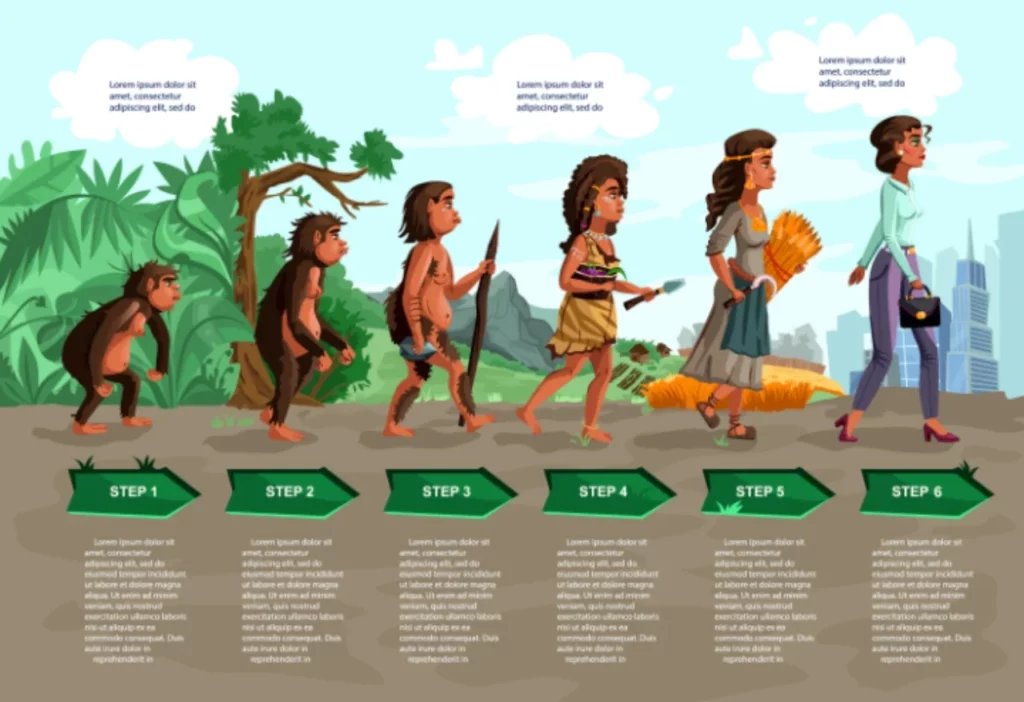
Famous and respected advertising legend Elias St. Elmo Lewis wrote a perceptive column in the year, 1898. There were reportedly other researchers who looked through the writings before lunch.
The column, written by Lewis but published under a pseudonym in the prominent 19th-century American magazine Inland Printer, detailed three advertising ideas that Lewis had found essential during his career.
Elias St. Elmo Lewis writes in his column that developing an effective and profitable AIDA model in digital marketing advertisements requires strictly following a predetermined formula.
Adopting a successful tactic relies completely on that tactic’s capacity to fascinate, pique interest, and instill steadfast belief in that order and the context of actual sales.
Lewis’s acclaimed ideas are just as relevant today as they were a century ago. Advertising agencies all over the world can now use the AIDA method, which stands for “attention,” “interest,” “desire,” and “action.”
How To Use The AIDA Model In Advertising
The AIDA model in digital marketing is useful for depicting the customer’s journey and interactions with a brand, beginning with awareness and ending with a purchase.
Let’s have a look at the AIDA model diagram phases and procedure together.
Phase 1: Attention
The first step in making a purchase is cultivating a sense of attention. Customers’ first experiences with a brand typically involve exposure to some form of advertising, internet shopping, or product discovery.
At this point, the online marketers’ primary focus is on expanding their audience reach with the AIDA model online marketing plan they’ve devised.
This strategy will help you attract more clients by making the benefits of your brand more apparent to them. If marketers employ this tactic, they’ll have a steady stream of leads from which to pull prospective future sales.
Companies and brands that dominate online will be able to capture consumers’ attention by:
- Creating compelling ads and spreading the word about a brand
- Using social media to conduct focused, one-on-one marketing campaigns
- Implementing Guerrilla marketing techniques, such as strategically placing ads in offbeat locations,
Phase 2. Interest
The next crucial step involves creating and showcasing a strong appeal for a product or service through the provision of eye-catching content that aims to educate and inform potential online customers about the products.
It’s common for clients to want more information about your services during the interest phase of the AIDA model for digital marketing so that they may make an informed buying decision.
Sales representatives and professional marketers understand the importance of this action as the cornerstone of building and maintaining client confidence in their brand.
Dominating companies will have the ability to cultivate customers’ interest through their AIDA model in advertising by:
- Adding a compelling and believable storyline to their advertising campaigns
- Bringing attention to the most important features of a service or product
- Putting the spotlight on the product’s most positive reviews done by previous consumers
Phase 3: Desire

Digital marketers employ the AIDA model’s third phase to help potential buyers identify whether they want or need their product or service. This typically follows the second stage, interest.
When buyers compare different products, they frequently transition from being interested in developing a strong desire for a particular product that has more benefits than the others.
Experts in the field of marketing use the AIDA model online marketing stage to introduce potential customers to the benefits of a product or service, in order to attract more sales and click-through rate.
By doing the following, eCommerce businesses can increase client desire for their goods and services:
- Putting their products to the test by proving they can solve a particular problem
- By associating positive emotions like joy and contentment with their goods.
- Displaying the characteristics that set a brand apart from competitors.
Phase 4. Action
In the last, fourth step of the advertising funnel known as AIDA, you must successfully motivate your customer to take action. Your product or service now has the customer’s full confidence.
When a lead is ready, willing, and able to take any and all steps necessary to become a paying customer, conversion occurs. They might be relatively careful, like when they pay for anything.
It may also necessitate a more serious commitment, such as the payment of a substantial sum or the maintenance of a subscription. Online marketing experts frequently use the AIDA model to increase their efficiency.
These techniques can be instrumental in securing successful deals and purchases through:
- Making it easier to sign up for a newsletter or other form of subscription.
- By making an attempt to engage your most valuable clients in your live chat service.
- Offering customers free shipping or delivery service as part of your business
Phase 5 (optional): Retention
Some experts in the field of digital marketing add a fifth step to the AIDA model. Maintaining a customer base that returns, again and again, is essential to the success of any business or online store.
The term “retention” refers to the act of retaining and nurturing current and past customers with the goal of prolonging their transaction with a company in order to enhance overall profitability and attract more relatable customers.
The AIDA Model: Pros And Cons
The AIDA model diagram is a popular tool in the marketing toolbox because it provides a foundation for developing successful marketing and PR initiatives.
There are benefits and drawbacks to this paradigm, just like there are to any other. Therefore, let’s take a look at the advantages and disadvantages of the AIDA model that you may use to shape your digital marketing approach.
1. Pros Of The AIDA Model Online Marketing

Aids In Market Understanding
The AIDA model in digital marketing is a valuable tool in the online community for marketers to gain a comprehensive understanding of the market, thanks to its clearly defined stages.
Furthermore, companies can understand the heart and soul of their target audience, which allows them to mold their marketing efforts to meet the goals of their campaigns.
Improved Client Relationships
Using the insights gained through the AIDA model in digital marketing, businesses can better understand their customers’ actions and reactions to their brands and products.
Sales and marketing professionals will be able to leverage this valuable insight to effectively cater to buyers’ needs and cultivate strong and enduring customer relationships through the years.
Enhancing a Brand’s Online Visibility And Impact
The AIDA model in advertising, which is known for its simplicity and effectiveness, will continue to serve as a standard for enhancing a brand’s identity and online visibility in search engine results pages.
If you run an online store or e-commerce store and want to improve your visibility, the AIDA model in digital marketing will help you pinpoint where you can make improvements.
However, you will have the option to inquire about various issues, including:
- Does everyone who visits my site find it easy to find their way around?
- Is each page of my website compelling enough to get people to take the next step?
- Does the website’s layout and design successfully persuade visitors to buy my wares?
- Is the placement of my CTAs optimal for getting people to sign up for my product or service?
Time-saving
Sales and marketing experts can save a lot of time and effort by using the AIDA model of communication. To do this, you must take on any and all additional promotional tasks that may arise.
This model lays out all the necessary steps, so business owners can quickly implement suggestions and check that they have a firm foundation before moving on to more complex marketing strategies.
2. Cons Of The AIDA Model In Advertising
Fails to consider non-linear buyer journeys
While this model is highly effective for a linear buying process, it may not be as impactful for buyer journeys that deviate from the linear approach of the AIDA model in digital marketing strategy.
Initially interested in your service, a potential customer may decide to pursue another option. However, when their wants are not met, they frequently return for a change in option.
Not Suitable For Spontaneous Purchases Or Quick Sales Cycles
However, the AIDA model’s reliance on a fixed-phase model ignores the dynamics of ultra-short sales cycles or impulse purchases, which is one of the model’s limitations when applied to digital marketing.
As a result, clients may experience elements of the AIDA model across numerous stages simultaneously. Thus, it is not very useful for transactions made on the spur of the moment or with a quick sales cycle.
Limited For First-time Purchasers
Your sales funnel’s end goal has to be the conversion of prospects into customers, be they first-time buyers or repeat customers. But this AIDA model of advertising is limited to first-time buyers who have a few marketing budgets.
It’s easier to prioritize upselling and customer retention than it is to seek out brand-new customers. Doing so would draw more attention to your company and hopefully result in more conversions from new clients.
Recent Evolution In The AIDA Model In Digital Marketing
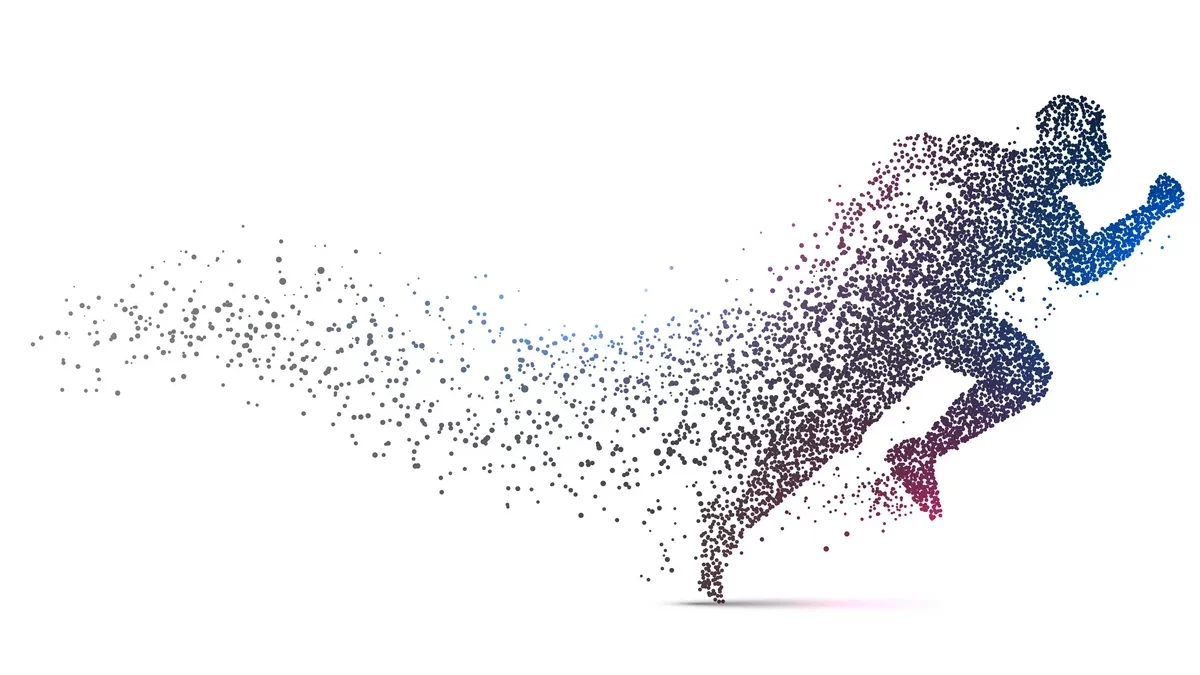
The AIDA model has been under heavy fire as of late for its apparent lack of complexity. For instance, it disregards the numerous digital marketing touchpoints that could result in a sale.
The marketing strategy for an actual customer looking to buy a new phone versus a customer who merely wants to learn more about new phones will be very different.
As a result of this, this has led to the proliferation of AIDA variants such as:
The AIDCAS Model
This means Action, Interest, Desire, Confidence, Action, and satisfaction. It is a comprehensive framework that outlines the key stages in the process of influencing consumer behavior.
Unlike the famous AIDA model in digital marketing, this particular model provides a structured approach for marketers to understand and address the needs and motivations of their target audience.
By following the AIDCAS model, businesses and dominant brands can effectively guide consumers through a series of steps that ultimately lead to a desired action or outcome.
The REAN Model
This means Reach, Engage, Activate, and Nurture. This model is a comprehensive funnel that aims to optimize the effectiveness of various marketing strategies.
This model emphasizes four key stages in the customer journey, ensuring a well-rounded approach to attracting and retaining customers. The first stage, reach, focuses on expanding the brand’s visibility.
The AIDAS Model
This stands for Awareness, Interest, Desire, Action, and satisfaction and is a widely recognized marketing model, just like the AIDA model in digital marketing.
But this particular model outlines the stages a consumer typically goes through when making a purchasing decision that will last for a longer period of time.
The NAITDASE Model
This is also known as the “need, attention, and interest,” “trust, design, and action,” and “satisfaction and evaluation” models. This funnel encompasses the various aspects of effective communication and customer satisfaction.
This model focuses on understanding and addressing the needs of the target audience, capturing their attention and interest, building trust, creating a compelling design, and prompting action.
It further covers areas such as ensuring satisfaction and evaluating the AIDA model of communication efforts. By following these tactics and the AIDA model in digital marketing, businesses will achieve desired outcomes.

